Kevin Hong and the Beauty of Iyashikei
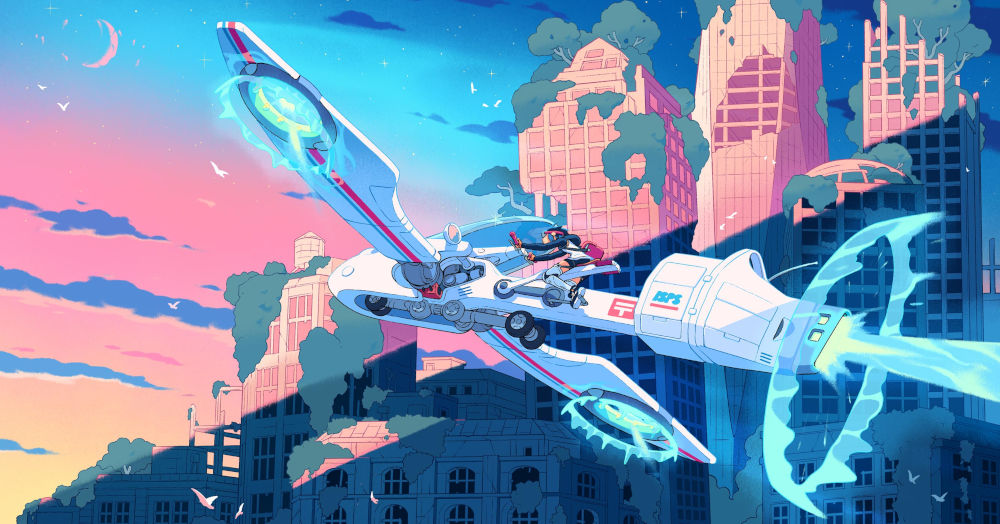
Hey Kevin! Why don’t we start by talking about your journey so far? We’re all curious about your work, the influences behind it, and any past experiences that helped you become the person you are today.
Hi everyone! Thanks so much for having me. My journey started like many others—drawing for as long as I can remember. As a kid, I loved making these elaborate worlds and futuristic cities by taping together reams of paper. Some of them got big enough to take up entire walls in my family’s basement!
Around when I got into junior high, I started diving into videogames, anime, and manga. Naruto was the gateway drug to anime back then because it had just aired on Toonami in the US. It led me to watch other stuff, including the works of Hayao Miyazaki, Satoshi Kon, Hideaki Anno, Mamoru Hosoda, etc. I could go on and on!
I think that’s when I really started to get inspired by these fantastical worlds and stories and actually started entertaining the thought of becoming a cartoonist.
When it came time to start thinking about university during my senior year, I spoke to my parents about trying art as a career. Luckily they were really understanding and supportive! I even enrolled in the comics program at the School of Visual Arts in Manhattan. Fast-forward a couple of months, and I end up switching to illustration. Turns out comics were way too tough, haha.
That said, storytelling, narrative, and worldbuilding have always been the core of what I enjoy most. And when I look back at those looseleaf tapestries I made as a kid, I feel that I’ve stayed pretty consistent!
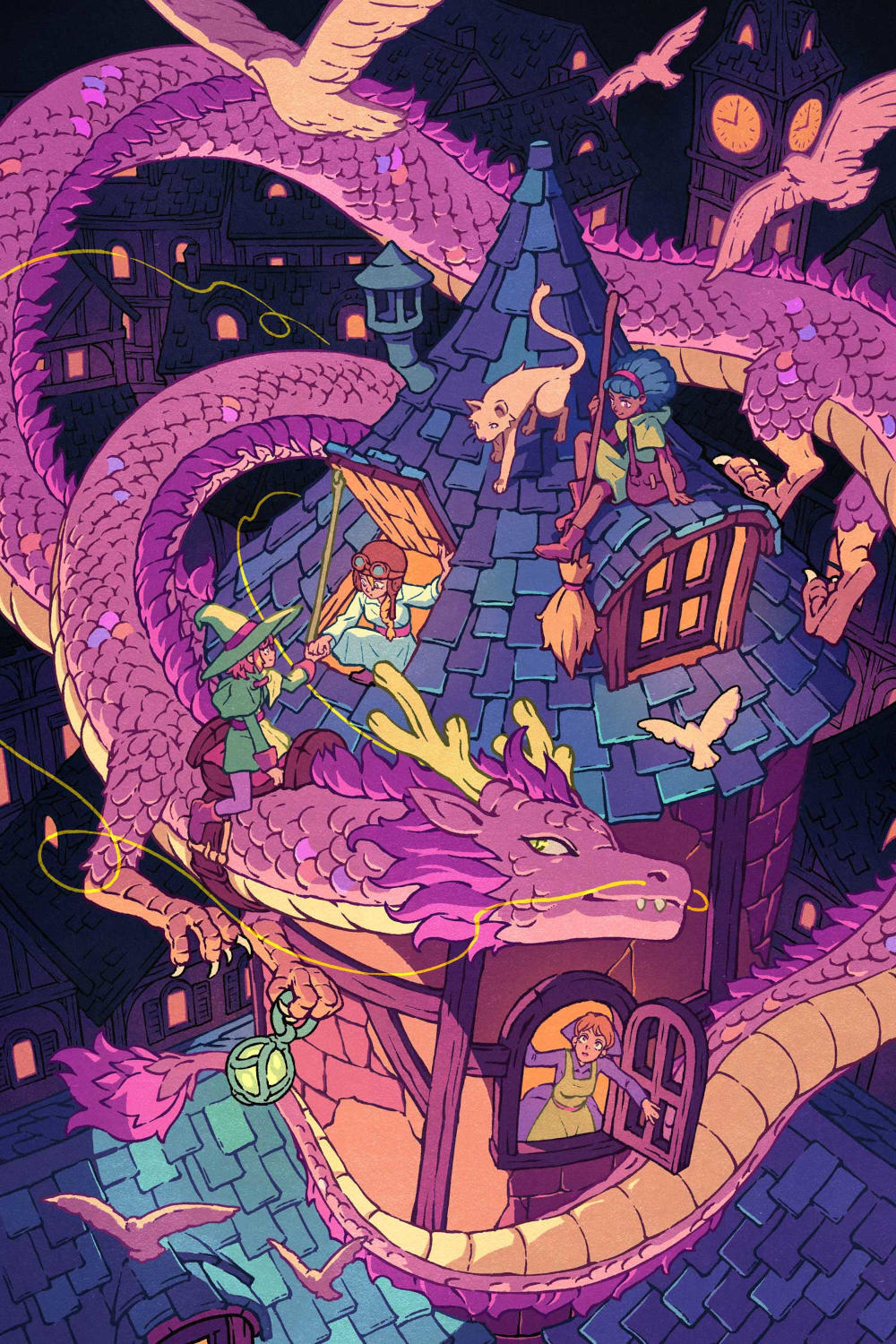
What’s life like for an artist living in NYC?
New York City is just a joy to be in. There are so many venues, restaurants, and places to visit, and it feels like there’s a gallery or museum on every other block. The drawback is that everything is so expensive! But it seems that most locations with a thriving art scene tend to be.
Hopefully, when I have the chance, I’d love to do more urban exploring in the less-traveled nooks and crannies of NY. Something on my wishlist is to purchase a decent camera and collect as many references as I can!
What was your biggest struggle as an artist, and how did you overcome it?
My biggest struggle may have been becoming comfortable with my own identity as an artist. It’s something that I think many young artists go through, especially because we live in such a media-saturated era.
More often than not, I see concerns about style and voice dismissed by older artists, but I think there are meaningful conversations and lessons about what style is and isn’t and how it can be utilized as a tool in an artist’s kit.
It took a while, but I eventually realized that I’ve always been easily influenced by my environment. It’s something that seeped into my relationship with social media as well, being influenced by art trends and what drew engagement rather than staying true to what brought me genuine joy when creating.
I’m not sure if I had a clear path to overcoming it—it was something gradual that I came to understand. But re-engaging with art and media that I love and consistently reminding myself why I make art helped.


Tell us about your time working in animation and some key things for younger artists to keep in mind before they try to enter this field.
While I’ve dabbled in animation as a background design and paint artist, I can’t say I’ve done enough of it where I’m comfortable enough to give out advice! I just have some nuggets that I think are universal when working in any team environment.
It’s always important to be flexible when it comes to drawing. The quicker you adapt to a show’s style guide, the better! Most of this comes down to having core drawing fundamentals down, but being receptive to feedback and not taking things too personally is also key.
Sometimes when you get your work back and it’s redlined all over, it can be demotivating. But it’s important to remember that while your AD may not write down positive feedback, it’s usually not because they think your work isn’t good. It’s because they have a lot of art to get through and need to pump out notes as quickly as possible.
Taking feedback professionally and asking questions when you aren’t 100% sure about something will do you and the rest of your team wonders.
Give us some of your favorite animated films for the people who are only just beginning to discover the medium. Let’s try to get a list of fun recommendations going!
There are so many! Some of my favorites include Summer Wars, Millennium Actress, Tokyo Godfathers, The Triplets of Belleville, The Illusionist, The Legend of Hei, The Secret of Kells, Wolfwalkers, etc.
While most animation I watch is anime, I can recommend the works of Sylvain Chomet (Belleville, Illusionist) for their fantastic animation and humorous, intelligently crafted stories.
Cartoon Saloon (Secret of Kells, Song of the Sea, Wolfwalkers) is also a powerhouse Irish animation studio that’s been pumping out gem after gem, with stories inspired by Irish folklore. Wolfwalkers (their most recent work) might be one of my favorite animated films from the past decade.
And then Legend of Hei is just a really fun action-adventure movie produced by a Chinese animation studio and based on what I think was originally a webcomic. The animation and fight scenes are so much fun, and it’s got a pretty heartfelt story too!

Could you walk us through some of the techniques and processes you used to create one of your recent illustrations?
While it depends on the project, I could talk about personal illustrations! I like to think of most of my personal work as narrative illustrations. I always enjoy building up scenes and vignettes, with characters interacting with one another and/or their environment.
Whenever I start one of these pieces, I’ll usually have a key story idea or action in mind. If not, I’ll piece something together by collaging references, photos, images, and art together in a moodboard and seeing what my brain conjures up from there.
While there are so many ways to approach composing a scene, I find the perfect moment to illustrate is one that offers just enough information to invite the audience into the world while leaving just enough out to encourage them to stay awhile. It’s drawing a moment that generates a question in the audience’s mind. Something that they’re invited to answer themselves. I think this is what makes a “non-sequential” narrative compelling.
Speaking about composition techniques, I always like to arrange objects in a scene to have a flow that leads into and around an illustration. Wherever I can, I’ll create focal points and connections either graphically through patterns, light, and shadow or through action and character gestures. These techniques are in service of the scene to help tell that story in a visually pleasing way.
When I first looked through your portfolio, I became a big fan of ‘Radio Valley’ and ‘The Dragon Witch.’ Both of them look like they have the potential to be made into an animated series! Can you tell us more about these projects and introduce us to the two worlds?
I can speak a little bit about them!
‘Radio Valley’ is an old project that I’ve been picking away at since 2017. It’s gone through many iterations and rewrites, but the core story centered around a last-of-its-kind delivery service branch operating in the distant future.
It’s a pastiche of works from my favorite anime/manga genre—Iyashikei (or healing anime)—which are down-to-earth ‘slice of life’ stories with characters living in peaceful, calming environments.
If I could recommend two works from the genre, I would definitely suggest people check out Hitoshi Ashinano’s Yokohama Kaidashi Kikkou and Kozue Amano’s Aria.
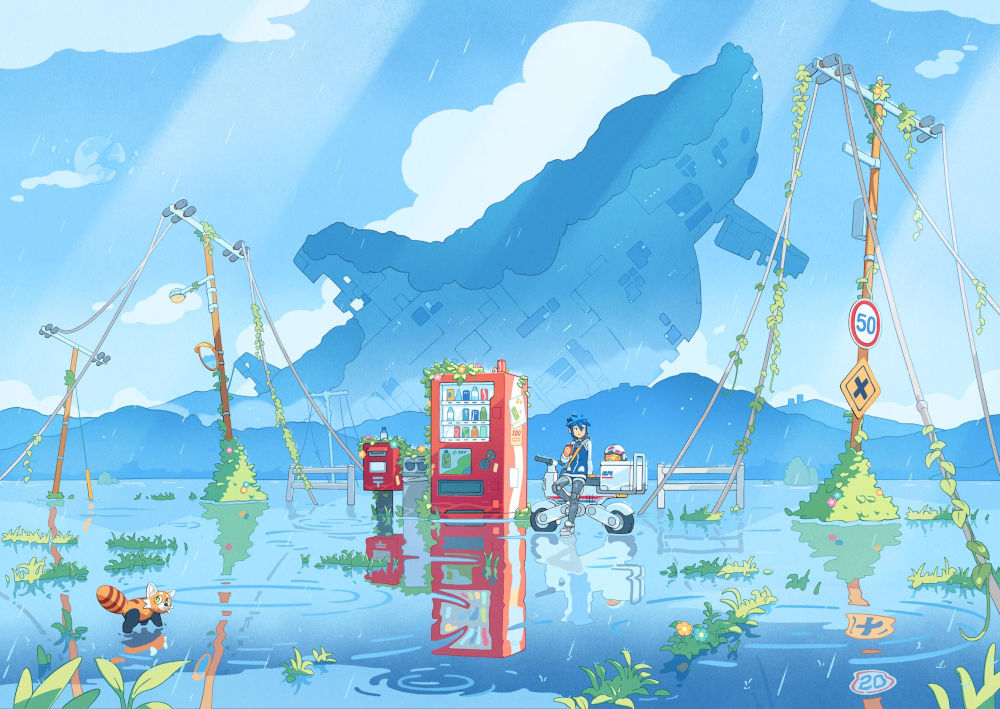
‘The Dragon Witch’ is a graphic novel pitch concept that I started working on when I signed on with my literary agent, Jennifer Azantian. It’s a coming-of-age story that tackles the theme of growing up as an Asian American. It follows the witch Anais who unexpectedly summons a dragon as her familiar.
I’m still in the process of rewriting swathes of it at the moment, so I can’t say too much!
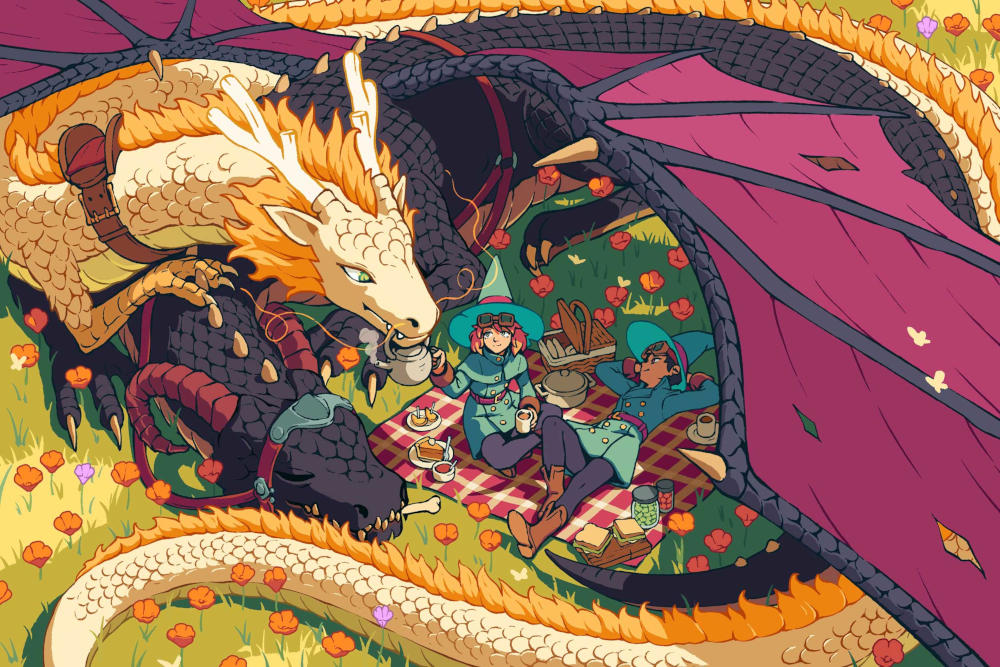
Many artists try to grow their fanbase using social media, but it rarely works as quickly or as well as we might imagine. What’s the big secret? How can an aspiring illustrator successfully build a community around their work?
If we want to speak practically, there are many things one can do. You can post at high-traffic hours (depending on your region), know what keywords to use when making a post to boost engagement, and participate in drawing trends like #portfolioday.
At the end of the day, your work has to be good. What good entails is where it gets nebulous. I could say things like “know anatomy, know perspective,” etc. but actually, what really matters is knowing what avenue you want to pursue and the kind of audience you want to tap into.
Once you know that, you can break down what good may mean for you. And if that avenue doesn’t seem to exist, then you may have to work a little harder to carve that niche out from scratch.
I guarantee that if what you’re doing is something you’re passionate about, then there will always be a place for you.
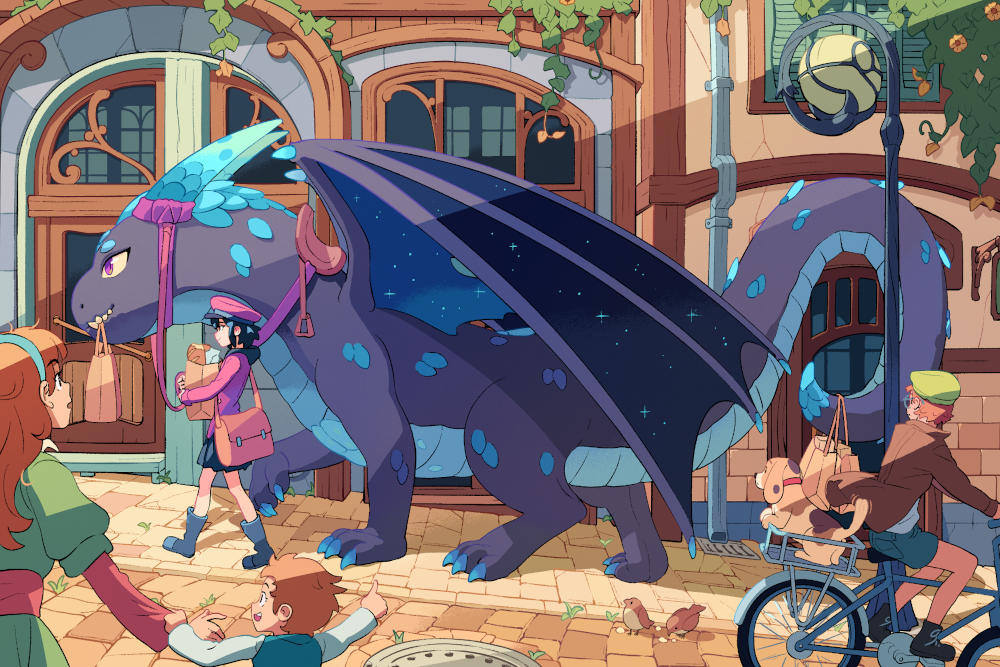
Digital media and social networks changed art forever, but with all the technological developments we’ve seen this year, I think it might be at a crossroads again. What do you think digital art will look like a decade from now?
I really have no idea. I can hardly keep up with how the scene changes each year.
I can say that I’m approaching the next decade with cautious optimism, but I have to admit that this optimism is hanging by a tenuous thread.
What’s next for Kevin Hong?
I don’t really know! Sometimes it feels like I’m just getting started.
I can tell you I’ll be dabbling in graphic novels soon! It seems that I’ve slowly found my way back to comics, finally feeling ready and equipped to tackle this medium! Aside from that, I’m just excited to be doing what I love. We’ll see where that takes me.
If you enjoy Kevin’s work, consider visiting his website or following him on Twitter.
Please donate to perephoneia.art if you liked this interview. Your support helps cover the hosting costs for the website, keeping it free and online for others to discover.
